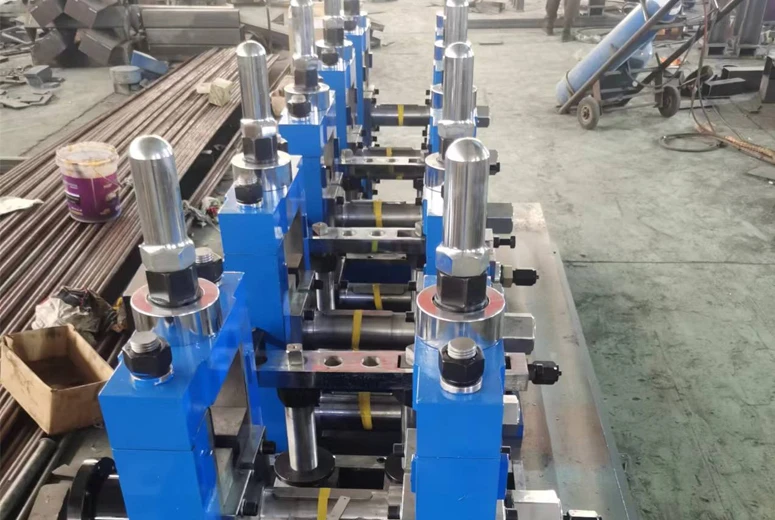bar straightening
The Importance of Bar Straightening in Manufacturing and Construction
In various industrial contexts, especially in manufacturing and construction, the precision and integrity of materials are paramount. One critical process that ensures this integrity is bar straightening. This process, though often overlooked, plays a vital role in ensuring the usability and quality of metal bars used in countless applications.
What is Bar Straightening?
Bar straightening refers to the process of aligning metal bars so that they are perfectly straight. Over time, metal bars can become warped or bent due to factors such as heat treatment, machining, or even just handling. These deviations can considerably affect the performance of the bar in a given application, making straightening an essential step before the bars are utilized or further processed.
The Need for Precision
Precision is essential in many industries, particularly in construction and machinery manufacturing, where structural integrity is critical. A bent or warping bar can lead to catastrophic failures in construction projects, resulting in safety risks and financial losses. Additionally, in machinery assembly, the use of warped bars can cause misalignments, which may lead to inefficiencies or even mechanical failure.
Straightening bars to their optimal specification ensures that the final products meet the desired standards of quality and safety. Thus, understanding the process and importance of bar straightening is essential for engineers, manufacturers, and construction professionals.
The Bar Straightening Process
The process of bar straightening typically involves several steps. Initially, bars are examined for any visible defects or deformations. Once identified, various mechanisms, such as rollers or presses, are employed to exert pressure on the bar at specific points to rectify the bends or warps. There are also specialized machines designed for this purpose, which can handle multiple bars simultaneously, increasing efficiency.
Quality control is an integral part of the straightening process. After the initial straightening, bars are often re-examined using specialized equipment to assure that they meet the required specifications. This may involve measuring the straightness over specific lengths to ensure compliance with industry standards.
bar straightening

Techniques and Equipment
Several techniques and pieces of equipment are used in the bar straightening process. Mechanical straightening machines utilize hydraulic or pneumatic systems to apply force to the bars to straighten them. Additionally, heat straightening may be employed, where localized heating is applied to specific sections of the bar to relax the stresses causing the deformation.
More advanced facilities may employ laser alignment technologies, which provide precise measurements of any deviation from straightness, allowing for more accurate straightening processes. These innovations greatly enhance the precision and efficiency of the straightening process, ensuring high-quality results.
Benefits of Bar Straightening
The benefits of bar straightening go beyond mere aesthetics or alignment. By ensuring that bars are straight, manufacturers can enhance the strength and durability of the final products. A straight bar can transfer loads and stresses more effectively compared to a bent one, leading to better performance in applications ranging from construction beams to automotive components.
Moreover, straightening can reduce waste. In industries where materials are costly, having a process that allows the reuse of deformed bars means less material waste, contributing to sustainability efforts within manufacturing practices.
Conclusion
Bar straightening is a critical process that underlies the quality and safety of products in various industries. From construction beams to automotive parts, the straightness of these bars can significantly impact their performance and longevity. As industries continue to prioritize precision and quality, the importance of effective bar straightening processes becomes increasingly evident.
Advancements in techniques and equipment promise to enhance the efficiency and accuracy of bar straightening, ensuring that manufacturers can produce high-quality materials that meet the demands of modern engineering and construction. As we move forward, the focus on such precise processes will continue to shape a safer and more efficient industrial landscape. Ultimately, bar straightening not only preserves material integrity but also plays a critical role in ensuring the success and safety of countless applications across various sectors.
-
High Frequency Straight Seam Welded Pipe Production Line-BzZhou Xinghua Machinery Equipment Manufacturing Co., LTD.|line pipe steel&welded gas pipeNewsJul.30,2025
-
High Frequency Straight Seam Welded Pipe Production Line-BzZhou Xinghua Machinery Equipment Manufacturing Co., LTD.|High Precision&Automated SolutionsNewsJul.30,2025
-
High Frequency Straight Seam Welded Pipe Production Line - BzZhou Xinghua Machinery Equipment Manufacturing Co., Ltd.NewsJul.30,2025
-
High Frequency Straight Seam Welded Pipe Production Line-BzZhou Xinghua Machinery Equipment Manufacturing Co., LTD.|Precision Welding, High EfficiencyNewsJul.30,2025
-
High Frequency Straight Seam Welded Pipe Production Line|BzZhou Xinghua|Precision Welding&EfficiencyNewsJul.30,2025
-
High Frequency Straight Seam Welded Pipe Production Line - BzZhou Xinghua|Precision Engineering&EfficiencyNewsJul.30,2025


